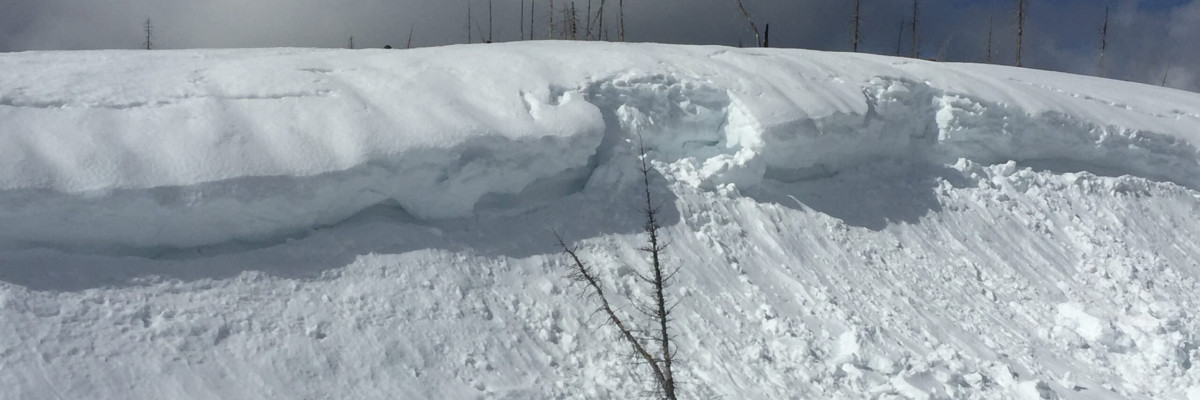The current avalanche danger is LOW for the west central Montana backcountry and will rise to Moderate this afternoon. Human triggered avalanches are still possible in isolated terrain this morning and human triggered avalanches are possible this afternoon.
Good morning, this is Travis Craft with the West Central Montana Avalanche Center’s avalanche advisory for March 23, 2017. This danger rating does not apply to operating ski areas, expires at midnight tonight and is the sole responsibility of the U.S. Forest Service.
Weather and Snowpack
Mountain temperatures range from 22 F to 35 F in the region. Winds are 14 mph with gusts of 25 mph out of the W in the Bitterroot. Point Six, in the northern part of the advisory area, winds are 16 mph with gusts of 27 mph out of the W. The area received 0 to 1 new inches of snow.
Logan and I took the sleds to the southern Missions near Seeley Lake yesterday. It was the first day of real solar activity. We saw wet releases in the afternoon and several cornice failures from the past couple of warmer days. Snotel sites got below freezing last night to 6000 feet, from 6000 feet and below it did not freeze. Warming temperatures and solar activity will increase the avalanche danger throughout the day. If you start to see roller balls or start to punch through the crust, it is time to change aspects. Cornices will continue to fail with the lack of freezing temperatures, give them a wide berth.
The primary avalanche problem today is loose wet releases this afternoon. Roller balls and pinwheels are clues to surface instability. When these start to show up, it is time to change aspects. With warm temperatures today and solar activity expect the avalanche danger to increase throughout the day.
The second avalanche concern is cornice failure. We saw many cornice failures in the southern Missions yesterday. With the warm temperatures and the sun, cornices will continue to weaken. Give them a wide berth. Cornices tend to break farther back than expected.
Avalanche and Weather Outlook
High pressure will dominate the region until Friday afternoon. Expect the avalanche danger to rise throughout the day. Overnight it is predicted to freeze to 4500 feet this will lock the snowpack up. Then with warmer temperatures and sun expect the avalanche danger to increase into the afternoon.
If you are out in the backcountry, please send us your observations, these are very helpful in producing the advisory. Logan will issue the next advisory on March 25, 2017.
Ski and ride safe.














